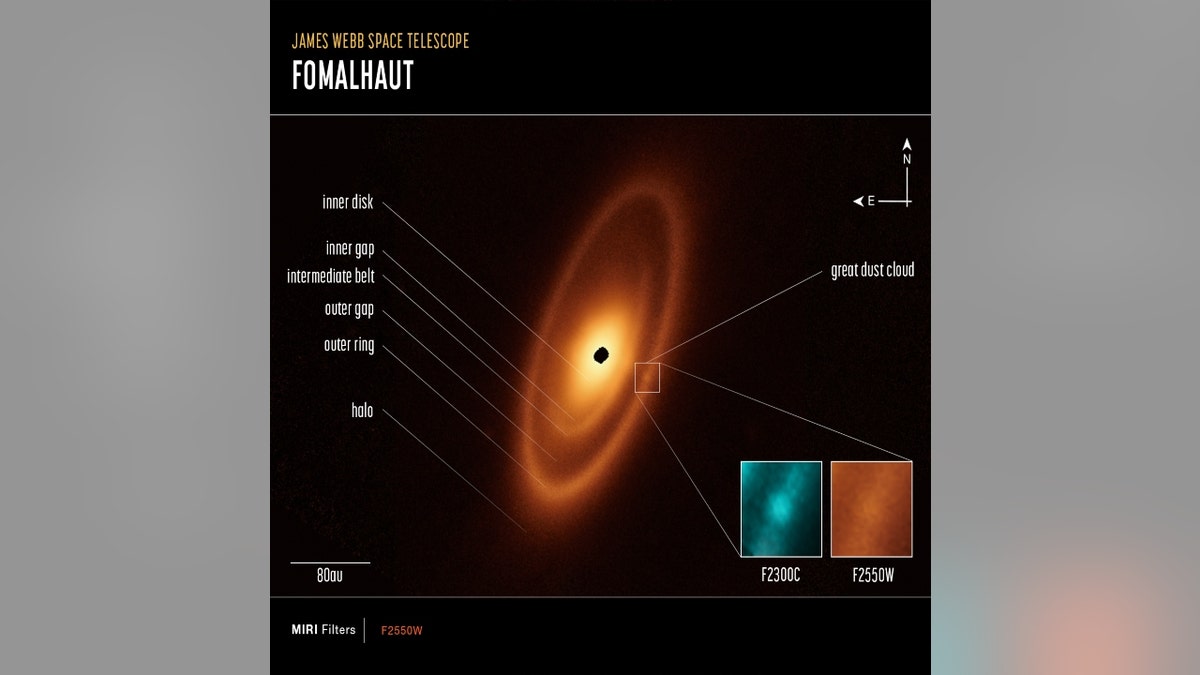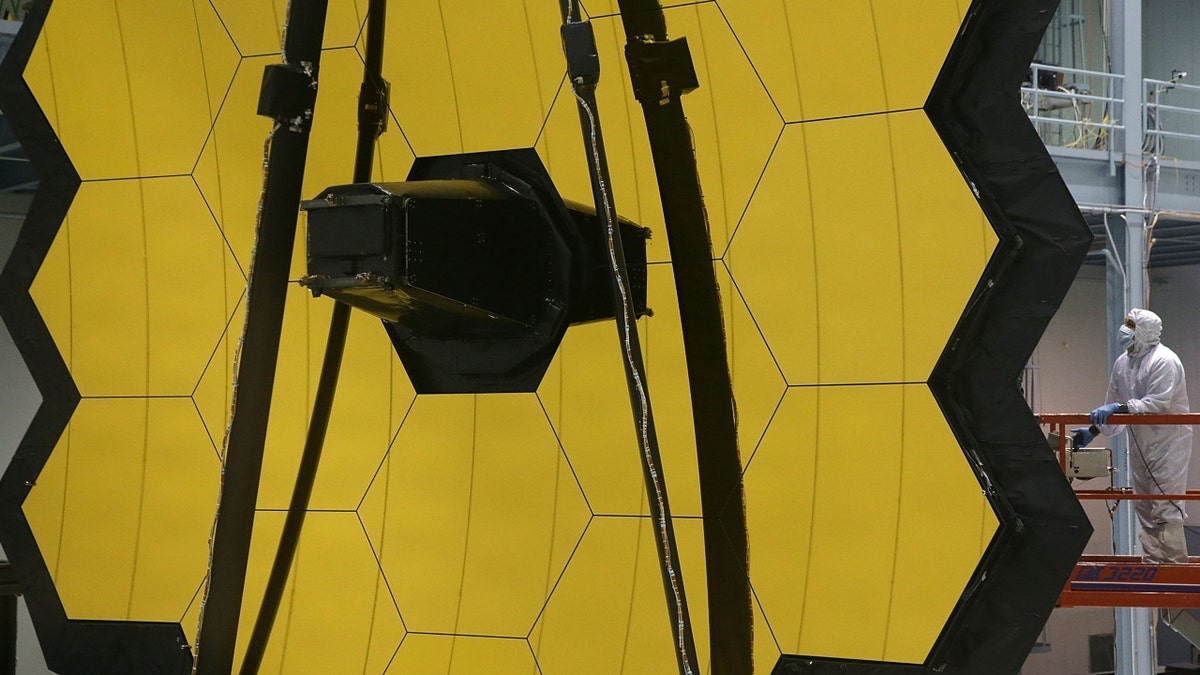NASA's planetary defense team successfully crashes spacecraft into asteroid
Former NASA astronaut Mike Massimino explains NASA's DART mission and why they intentionally crashed a spacecraft into an asteroid
The first asteroid belt ever seen outside the solar system is more complex than expected, astronomers found, using observations by the James Webb Space Telescope.
Looking at the warm dust around a nearby young star, Fomalhaut, in order to study the belt in infrared light, the scientists found that the structures are more complex than the asteroid and Kuiper dust belts of our solar system.
There are three nested belts extending out to 14 billion miles from the star. The scale of the outer belt is around twice that of our solar system's Kuiper Belt.
The inner belts were revealed by the telescope for the first time.
THE RINGS OF SATURN ARE FALLING IN ON THE PLANET AS ICY RAIN, SCIENTISTS SAY

This image of the dusty debris disk surrounding the young star Fomalhaut is from Webb’s Mid-Infrared Instrument. It reveals three nested belts extending out to 14 billion miles, or 23 billion kilometers, from the star. The inner belts – which had never been seen before – were revealed by Webb for the first time. (Credits: NASA, ESA, CSA, A. Gáspár (University of Arizona). Image processing: A. Pagan (STScI))
The dusty belts surround the star, which can be seen as the brightest star in the constellation Piscis Austrinus.
The belts are the debris from collisions of larger bodies, frequently described as "debris disks."
While the Hubble Space Telescope, Herschel Space Observatory and Atacama Large Millimeter/submillimeter Array (ALMA) have previously taken sharp images of the outer belt, none of them found any structure interior to it.

This image of the dusty debris disk surrounding the young star Fomalhaut is from Webb’s Mid-Infrared Instrument. It reveals three nested belts extending out to 14 billion miles, or 23 billion kilometers, from the star. The inner belts – which had never been seen before – were revealed by Webb for the first time. Labels at left indicate the individual features. At right, a great dust cloud is highlighted and pullouts show it in two infrared wavelengths: 23 and 25.5 microns. (Credits: NASA, ESA, CSA, A. Gáspár (University of Arizona). Image processing: A. Pagan (STScI))
"By looking at the patterns in these rings, we can actually start to make a little sketch of what a planetary system ought to look like – If we could actually take a deep enough picture to see the suspected planets," the University of Arizona's András Gáspár, the lead author of this research, said in a statement.
WEBB SPACE TELESCOPE SEES MASSIVE PROTOCLUSTER OF GALAXIES IN THE EARLY UNIVERSE
Hubble, ALMA and Webb are joining forces to get a wider view of the debris disks around multiple stars.
As Webb images more systems, NASA says more will be learned about the configurations of planets that carved the belts with their gravitational forces.

This is the James Webb Space Telescope during assembly on Nov. 2, 2016, at NASA's Goddard Space Flight Center in Greenbelt, Maryland. (Photo by Alex Wong/Getty Images)
For example, inside our solar system, Jupiter corrals the asteroid belt and the inner edge of the Kuiper Belt is sculpted by Neptune.
"The belts around Fomalhaut are kind of a mystery novel: Where are the planets?" George Rieke, another team member and U.S. science lead for Webb’s Mid-Infrared Instrument, said. "I think it's not a very big leap to say there's probably a really interesting planetary system around the star."
Webb also imaged what Gáspár coined "the great dust cloud," which may be evidence for a collision occurring in the outer ring between two protoplanetary bodies. By 2014, subsequent observations showed that the object had vanished. A possible explanation is that the new feature is an expanding cloud of very fine dust particles from two icy bodies that smashed into each other.
CLICK HERE TO GET THE FOX NEWS APP
Fomalhaut's dust ring was discovered in 1983 in observations made by NASA's Infrared Astronomical Satellite. The existence of the ring has also been inferred from previous and longer-wavelength observations using submillimeter telescopes.
The latest results are being published in the journal Nature Astronomy.





















